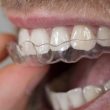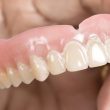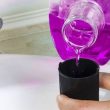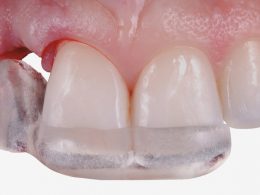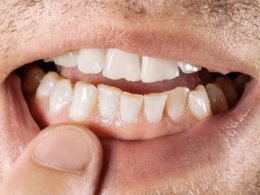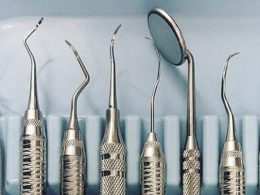Table of Contents
The sinus or maxillary antrum is one of the anatomical structures that make up the paranasal sinuses of people, cavities found in some bones of the skull and face, with the main function of lightening their weight, heating and moistening the inhaled air, secrete mucus, act as a sounding board for the voice and expel or dispose of any foreign body that enters the body during breathing. The paranasal sinuses are the “filters” of the air we breathe.
The maxillary sinus is located in the posterior portion of the maxillary bone (upper jaw), on each side of the nostrils and below the eye orbit. Since we have 2 maxillary bones (one right and one left), we have 2 maxillary sinuses.
From a dental point of view, their importance lies in the fact that they occupy a large part of the maxillary bone, and as they are empty cavities and without bone, they often prevent or limit the placement of dental implants at the level of upper molars and premolars (posterior teeth).
Under normal conditions, there are generally no drawbacks, as there is usually a bone thickness of more than 10 mm between the sinus and the oral cavity, enough space and tissue to successfully fix a dental implant.
The problems arise when the patient loses the teeth in the area and allows a long time to pass before making the decision to opt for dental implants. As there are no teeth, the maxillary sinuses tend to enlarge, descend and gradually occupy most of the residual ridge where the natural teeth were, and where dental implants must be placed. This phenomenon of sinus descent and bone loss is relatively normal and common after tooth loss or extraction, and is known by the term pneumatization.
If this happens, it is then necessary to fill a part of the maxillary sinus with bone, in order to ensure that the implants are firm, well anchored and completely covered by bone tissue.
How Is the Surgical Procedure?
Sinus elevation is a surgical technique that is performed, as we said, for the treatment with osseointegrated implants of the upper jaw when there is not a good availability of bone.
It is in essence a very delicate intervention, and in our opinion, it should only be performed by Specialists in Oral or Maxillofacial Surgery. Basically consisting of accessing the floor of the maxillary sinus to separate its membrane, elevate it and place an osteoinductive graft material under it; to keep it in position, stimulate the formation of new bone and to insert the implants without invading the paranasal antrum.
When the height of the residual bone is between 5 and 8 mm in height, it is recommended to insert the implants simultaneously with the elevation of the maxillary sinus and the use of biomaterials, since in this clinical situation a good primary stability of the implants is achieved.
When the available bone height is less than 5 mm, it is recommended to wait at least 6 months for the insertion of the implants, after having raised the maxillary sinus and placed bone grafts and/or filling biomaterials.
Regardless of the technique to be used, the most important aspect of this type of surgery is to preserve the integrity of the sinus membrane. Schneider’s membrane or sinus membrane is a thin layer of cells, with a thickness between 0.3 and 0.8 mm, which is located lining the interior of the entire sinus cavity.
If this membrane is perforated or torn during surgery, the entire intervention would be put at risk, since the chances of infections, sinusitis and rejection of the material placed; would be very high, despite the prescription of powerful antibiotics.
Direct or Lateral Technique for Maxillary Sinus Elevation
The classical or lateral window technique (Cadwell-Luc access) consists of making an access with rotary or ultrasound instruments from the lateral wall of the upper jaw, accessing the cavity without perforating the membrane. The Schneider’s membrane is carefully detached, creating the necessary space for the placement of the replacement bone material, to later, place the implants in the desired position and length.
Indirect or Transalveolar Technique
It is also possible to lift the sinus from the bone crest, through the perforation made to place the implants. This is a technique that at first glance might seem simpler, but on the contrary, it is more technical-dependent and requires greater skill.
Although it is much less invasive, this is a technique in which the intervention is performed blind, which increases the risk of perforating the membrane.
Grafts and Filling Materials
There are several possibilities. Although the patient’s own bone blocks obtained from other donor areas such as the mandibular branch, the chin, the iliac crest or the cranial calvaria can be used; at DENTAL VIP we always use artificial osteoinductive fillings for this type of procedure.
We consider that Zygomatic and Pterygoid Implants are always a better alternative in extreme cases, since they avoid multiple bodily injuries, long waiting times and the high probability of rejection of this type of autografts.
Platelet-Rich Fibrin (PRF)
The application of PRF is an innovative technique used in Dentistry and many Medical Specialties to regenerate tissues and promote faster healing with lower risks of infection. The platelets contained in the platelet-rich fibrin release growth factors that optimize the healing and tissue regeneration process.
In DENTAL VIP it has given us very good results, and we always add this biological concentrate obtained from the patient’s own blood, to the artificial filling material that is placed on the floor of the maxillary sinus.
What Does Sinus Lift Surgery Involve?
Like any surgical act, a good diagnosis, a lot of planning, a correct preoperative protocol, asepsis and the participation of a truly experienced Oral Surgeon.
Generally, the procedure is planned based on a Cone Beam or Volumetric Tomography of the upper jaw. Of course, all basic preoperative studies such as coagulation profile, glycemia, HIV and VDRL are indicated.
The technique to be applied during the intervention is determined based on the anatomical characteristics of the case and the amount of remaining bone tissue. Usually, they are performed under local anesthesia and the lateral technique is reserved for those patients with very little bone, who will then have to wait between 6 and 9 months to receive their implants. The indirect technique is the one we practice most frequently, and it is performed in conjunction with the placement of dental implants.
After surgery, routine postoperative indications, medication and some special measures, are reviewed again. It will always be necessary to take antibiotics, analgesics and anti-inflammatories. As a rule, are usually indicated 7 days of rest.
Among the special measures, we find all those associated solely and exclusively with maxillary sinus procedures:
1- Avoid Blowing the Nose, Sneezing or “Unclogging” the Ears
For a period of at least 15 days. If sneezing is unavoidable, then do it freely, with the mouth open and without obstructing or resisting the pressure generated by the expulsion of air. Never try the Valsalva maneuver, which is typical for unclogging the ears and which consists of trying to exhale air with the mouth and nose closed.
Any of these actions could cause an oro-antral communication, a rather serious complication that is difficult to resolve.
2- Avoid Diving or Submerging the Head Under Water
Also, for a period of at least 15 days. Also avoid any intense activity or exercise that may cause an increase in intra-sinus pressure.
3- Use Afrin® or Any Other Nasal Decongestant
In drops or spray, every 12 hours during the first 7 days, to keep the airway permeable and facilitate post-surgical drainage of the operated cavity.
4- Take the Prescribed Antihistamine
For a period of 15 days, but only if it has been indicated.
5- Do Not Travel by Plane for at Least 10 Days
Since pressure changes in the ascent and descent of the aircraft, could affect the integrity and stability of the sinus membrane.
“In Many Cases, Sinus Lift Surgery, Is an Indispensable Procedure for the Placement of Dental Implants In the Upper Jaw”.
DENTAL TIP
Making Dentistry Care Simple and Affordable…
DENTAL VIP is one of the most modern and recognized private dental clinics in Venezuela, and it could be your trustworthy partner in dental treatment abroad offering you: over 12 years of experience in dental tourism, excellent Dentists, high quality treatment covered by guarantee, comprehensive care, supportive and helpful staff, affordable prices and comfortable stay at our recommended hotels in Caracas.
All Dentists working at DENTAL VIP have a long experience in Dentistry and are highly qualified. Our Dentists, apart from having fourth level studies, regularly take part in domestic and foreign trainings, conferences and seminars.
The quality is guaranteed, and the price too! Do not waste any more time, contact us today and save up to 70% on extensive or highly complex dental treatments.


